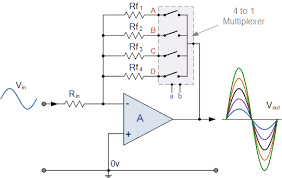What is multiplex addressing?
Blaze Display Technology Co., Ltd. | Updated: Nov 27, 2018
Multiplex addressing is an addressing scheme where one (or a few) rows of an image at a time are being addressed sequentially until the entire screen is painted. Then the addressing repeats. The picture elements (pixels, icons, segments) are arranged in a matrix. The matrix arrangement is either physical or electrical. In a physical arrangement, pixels are arranged in rows and columns within a graphic array. In an electrical arrangement, COM (commons) electrodes are the equivalent of rows, and SEG electrodes are the equivalent of columns. The cross-overs of rows and columns form capacitors with the liquid crystal as the dielectric
Multiplex addressing works for liquid crystal displays because nematic liquid crystals respond to the RMS value of the applied signal and not to the instant applied field. The ratio between the resulting RMS voltage for an on and off pixel is a function of the number of rows (N) that are being addressed in multiplex addressing.
The more rows to be addressed, the smaller the ratio between the on and off voltage.Higher row count also requires the liquid crystal display to have a steeper ransition within the transmission-voltage characteristic. STN displays have a steeper transition than TN displays, so STN displays can have a higher number of rows than TN displays.
The ratio of the amplitudes of the column and row signals is called the Bias Ratio B. The square root of the number of rows (N) is an ideal bias ratio as it results in the largest possible Von:Voff ratio. N is often expressed as the multiplex ratio 1/N. Multiplex and bias ratio are parameters that must be specified and programmed into the LCD driver/controller.


